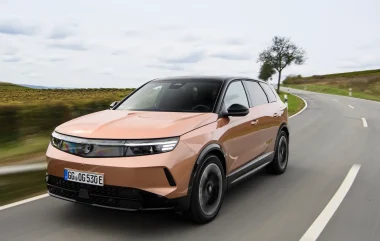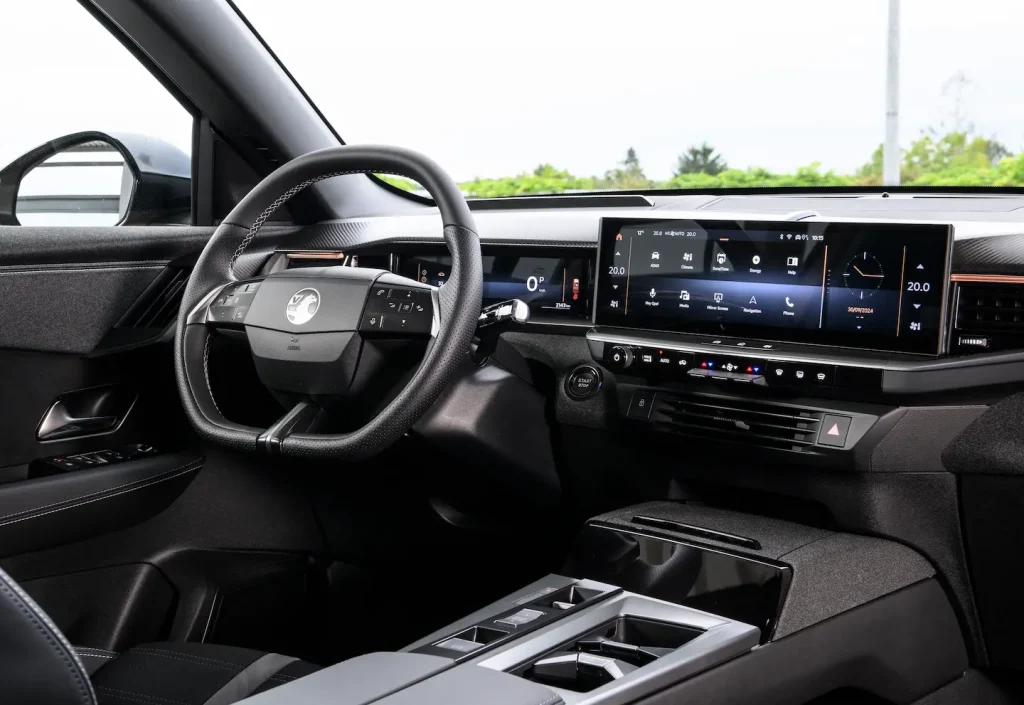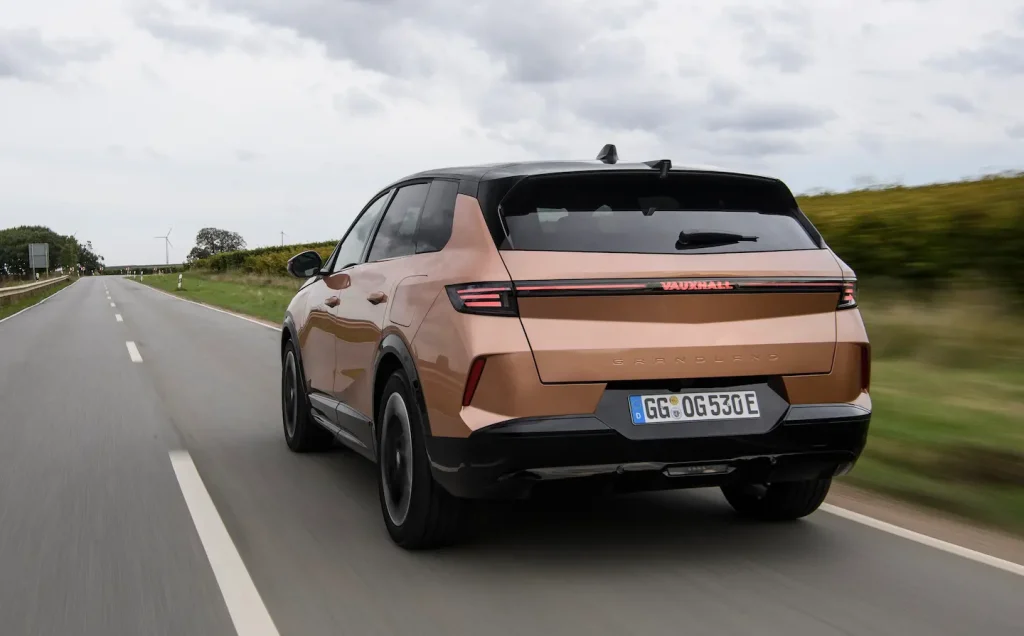
If you’re looking for similarities between the all-new Vauxhall Grandland and its predecessor, good luck. That’s because Vauxhall’s new range-topper is now built on the same Stellantis electrified platform as the latest Peugeot 3008 and shares many of the same technologies.
You can even spot similar design elements in both cars, such as the hidden inverted weather strips running along the tops of the doors. Still, it’s the Grandland which steals the catwalk limelight for now thanks to its fully lit ‘Visor’ front grille replete with an illuminated brand icon and its VAUXHALL lettering integrated into the rear light cluster. You can probably expect to see these types of Blackpool illuminations popping up on everything from Renaults to Rollers now that they have been legalised.
The Grandland is also 120mm longer between the front and rear axles than the 3008 so it gains an extra 30 litres of boot space and provides additional legroom for rear passengers.

Interior a significant step forward
Perhaps more pertinently, the interior of the Grandland is a significant step up from the dour acres of black-on-black plastics of previous Vauxhall cabins, thanks to a kaleidoscope of material textures and a wild collision of screens and hues.
Although it will undoubtedly take time for the intricacies of the swipes and scrolling actions and the many infotainment menus to sink into your grey matter, at least some physical hard key functions, such as those for the air con, can be controlled via obvious dash-mounted buttons.
Much like the 3008, the Grandland’s steering wheel is a flat-top and bottomed affair, but it is larger, so the driver looks through, rather than over the wheel to see the main instrumentation. That’s great but unfortunately, the larger wheel blocks out some of the central infotainment screen, meaning neither Vauxhall’s nor Peugeot’s arrangement is ideal.
The Grandland’s front seat cushions feature a rather quirky trench-like depression running front to rear, which allegedly reduces pressure on the tailbone. Although we didn’t cover sufficient miles to test this theory we can see the logic in it.

Mild hybrid and electric power
With a 73kWh-capacity battery and 213hp motor– a larger 97kWh battery version is in the pipeline- the EV Grandland produces responsive performance and has a range potential of up to 325 miles. Therefore, it offers a decent compromise between giddy-up and efficiency, so apart from more audible electric motor whine than you might expect, it goes about hauling the Grandland in a seamless manner. Unfortunately, stopping isn’t quite so seamless as the brakes are rather grabby at low speeds so you might want to ditch that nodding dog dash ornament.
There’s also a new 48V mild hybrid model that employs a belt-driven starter/generator and a 1.2-litre three-cylinder petrol engine replete with timing chain rather than the problematic belt in oil iteration fitted to previous generation engines. Despite the whole plot being well over 500kg lighter than the EV version, the petrol engine does struggle somewhat and needs to be worked pretty aggressively a lot of the time, and it does get rather vocal with it. Certainly, its cause isn’t helped by gearshift software skewed heavily towards economy as it is always looking to select the highest gear possible from the 6-speed auto and creates quite a bit of audible lugging boom in the process.
Despite claims from Stellantis that each manufacturer in the group needs to retain its unique driving characteristics the budget to make this happen must be extremely scant. The Grandland’s steering feels much like the 3008’s, ie. overly light with excessive play around the straight-ahead, so it is all too easy to dial in an excessive input when coming into a corner and find yourself clumsily shuffling back and forth at the wheel, trying in vain to attain a smooth, progressive cornering arc. Suspension-wise, there are two rear axle arrangements – the EV gains a more sophisticated multi-link set-up -but neither is truly optimised. Both feel somewhat firm and fidgety and generate unwanted agitations through the steering column and the front footwell. In fairness, both models settle and feel more relaxed and securely planted on faster motorway routes.
Positive: Excellent interior and boot space, striking interior design, decent EV range
Negative: Choppy ride, boomy petrol engine, disconnected steering
Standard equipment: LED headlights and taillights, body colour rear spoiler. EV add wider front and rear wheel arch cladding and a high gloss. 10-inch touchscreen with wireless Apple Carplay and Android Auto, front and rear parking sensors, dual zone electronic climate control, electric parking brake, power-fold door mirrors with welcome puddle lighting, adaptive cruise control, lane keep assist and traffic sign recognition
Engines: Mild hybrid: 136hp 1.2; Electric 213hp
Equipment grades: Design, GS, Ultimate
Transmissions: Six-speed auto, single speed auto
| Model | Vauxhall Grandland EV Ultimate |
| P11D | £45,195 |
| Residual value | N/A |
| Depreciation | N/A |
| Fuel | N/A |
| Service, maintenance and repair | N/A |
| Cost per mile | N/A |
| Range | 318 miles |
| CO2 (BIK%) | 0g/km (2%) |
| BIK 20/40% a month | N/A/N/A |
| Luggage capacity | 326 litres |
| Battery size/power | 157kWh/213hp |
| Score | 6/10 |





